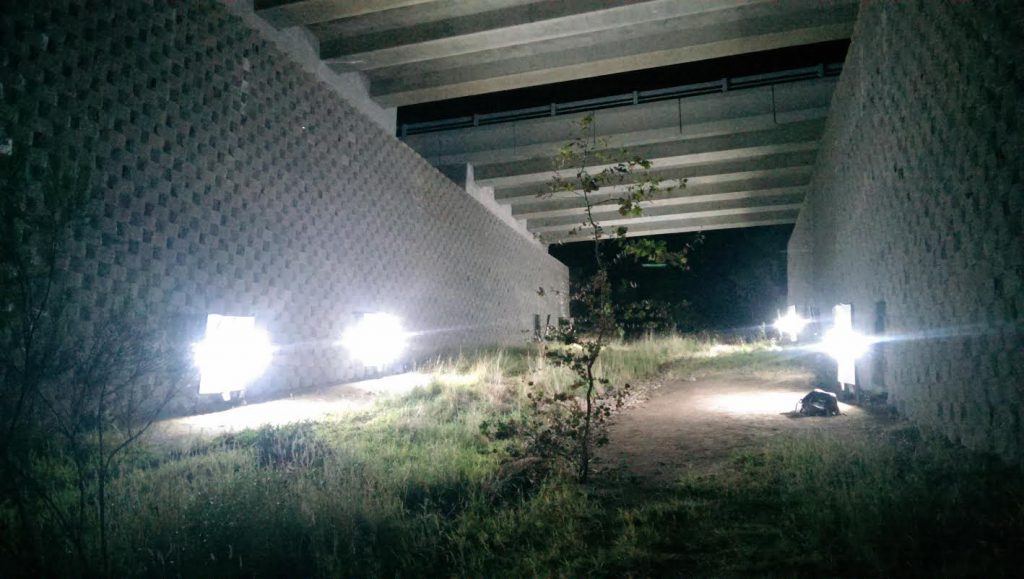The construction of wildlife-crossing structures (especially underpasses and green bridges) for the obstacle-free overcoming of highly frequented traffic routes is the subject of many current plans as a concept for the reconnection of habitats. Bats are also increasingly taken into account when planning crossing structures. In an effort to improve cost efficiency, however, it is also becoming increasingly popular in the context of planning to design the crossing aids in such a way that people can also use them to safely cross/under roads. Unfortunately, it is often not considered to reconcile the needs of humans and wild animals, which consequently leads to a reduced benefit for nature conservation. For example, nighttime lighting installed for human safety can affect the use of bats.
In this context, we would like to draw attention to a recently published study on the influence of artificial light on the nocturnal frequency of use of insectivorous bat species in underpasses in Australia. In an experimental approach, measurements of bat activity were carried out before, during and after installation of the artificial lighting of the underpasses. The results of the investigations confirmed the assumption that bats tend to avoid illuminated underpasses. Only for one species could an attraction effect on the light be proven. Artificial nocturnal lighting on such wildlife-crossing structures thus increases the barrier effect of roads and thus the probability of road mortality for bats by (as in the example of the Australian study) 1. either an increase in the crossing rate above the motorway and a decrease under the underpasses, or 2. a decrease in the rate of crossing both above the motorways and under the underpasses. The latter can lead to isolation of populations. The results thus confirm findings from previous studies and underpin the current recommendations for the planning and design of crossing aids for bats in Germany (e.B the one published by the Saxon State Ministry of Economic Affairs, Labour and Transport Guidelines for the planning and design of crossing aids from 2012, which was prepared on behalf of the Federal Office for the Environment Working basis for the planning, design and rehabilitation of transport infrastructures,or the current EUROBATS Guide to the Inclusion of Bats in Lighting Projects).
From the point of view of bat protection, we therefore urgently point out that crossing aids should not be illuminated in order not to impair their function as a safe way of overcoming traffic routes. A so-called bat-friendly lighting can be a compromise, but it should be noted that this reddish light is also avoided by some bat species.

Original study:
Bhardwaj, M., Soanes, K., Lahoz-Monfort, J. J., Lumsden, L. F., & van der Ree, R. (2020). Artificial lighting reduces the effectiveness of wildlife-crossing structures for insectivorous bats. Journal of Environmental Management, 262, 110313 https://doi.org/10.1016/j.jenvman.2020.110313
